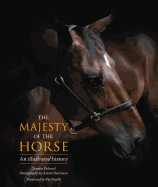
| Publisher: | Barron's | |
| Genre: | Animals, Pets, General, Horses, Nature | |
| ISBN: | 9780764164163 | |
| Pub Date: | October 2011 | |
| Price: | $35 |
| Nature & Environment |
by Tamsin Pickeral; photography by Astrid Harrisson
The Majesty of the Horse is one of the finest equine photography books around. Starting with the Asiatic Wild Horse, a stocky, round-nosed breed roaming southwest Mongolia, Tamsin Pickeral provides the history for more than 80 breeds, and while the descriptions are informative, Astrid Harrisson's photographs are absolutely splendid. The Akhal Teke of Turkmenistan looks carved out of peach marble; the tiny, rare Caspian (Iran) is a sepia Dürer drawing; the majestic black Friesian (Holland) is covered by a Lady Godiva rippling mane; the Ariègeois pony (France) has a copper-flecked ebony mane to match its eyes; the Knabstrup (Denmark) is Dalmation-spotted; the russet-colored Don (Russia) is photographed against snowy white birches; the Rocky Mountain Horse (U.S.) peeks coquettishly through a platinum mane.
Each magnificent horse is photographed in close-ups--graceful lines, limpid eyes--or in full-size action: running in the misty Camargue, for example, or prancing through an Indian forest. You may think you have enough horse books, but think again. You need this book. --Marilyn Dahl, book review editor, Shelf Awareness
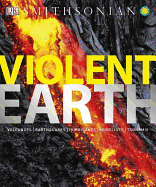
| Publisher: | DK Publishing | |
| Genre: | Earthquakes & Volcanoes, Earth Sciences, Geology, Science, Nature | |
| ISBN: | 9780756686857 | |
| Pub Date: | October 2011 | |
| Price: | $40 |
| Nature & Environment |
by Robert Dinwiddie, Simon Lamb, Ross Reynolds
Our planet's beauty is bounded by danger. Thousands of miles beneath our feet, tectonic plates shift and clash to spawn earthquakes and tsunamis, while Earth's molten core awaits the opportunity to leak magma up to the surface through volcanoes. Meanwhile, in our atmosphere, the highs and lows of pressure systems create hurricanes, tornadoes and other severe weather.
Violent Earth is a comprehensive and current reference book, produced in association with the Smithsonian Institution, combining scientific fact, real world examples and breathtaking photography. Its engrossing coverage of the origins and effects of volcanoes, earthquakes, mudslides, tsunamis and severe weather is perfect for the older teen or adult earth scientist, with an up-to-date timeline of notable disasters up to this year's Japanese tsunami. Bundle this gift with a disaster preparedness manual for extra effect! --Jaclyn Fulwood, graduate assistant, University of Oklahoma Libraries

| Publisher: | Timber Press | |
| Genre: | Trees, Plants, Nature | |
| ISBN: | 9781604692198 | |
| Pub Date: | August 2011 | |
| Price: | $29.95 |
| Nature & Environment |
by Nancy R. Hugo
Nancy Ross Hugo and photographer Robert Llewellyn have put together a tree book unlike any other, meant to teach us not simply to identify a tree and move on, but to discover natural, cyclical phenomena such as the blooming of the sassafras or the acorns plumping out. Trees are wild beings, every bit as worthy of close observation as birds. These miracles of nature do not readily yield their secrets, but careful observation will reap bountiful aesthetic and environmental rewards.
Llewelyn, an inspired and creative photographer, has shot incredibly sharp images, using a white background to emphasize details such as the intricacy of the pinecone or the unfurling of a beech leaf and marvel at nature's wise adaptations. Seeing Trees is a perfect book for naturalists, environmentalists or anyone who has ever taken a walk and looked around. --Valerie Ryan, Cannon Beach Book Company, Ore.
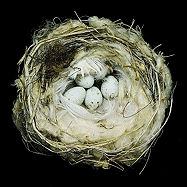
| Publisher: | Chronicle | |
| Genre: | Individual Photographers, Plants & Animals, Subjects & Themes, Artists' Books, Photography | |
| ISBN: | 9780811877589 | |
| Pub Date: | May 2011 | |
| Price: | $29.95 |
| Nature & Environment |
by Sharon Beals, illust. by Laurie Wigham
Nests are more than homes: they are historical artifacts, objects of scientific analysis, and examples of nature's beauty--and all these modes are captured brilliantly by San Francisco-based photographer Sharon Beals, whose discovery of the collection at the California Academy of Sciences will excite bird lovers and inspire environmentalists and conservationists. Twigs, leaves, spider web and cocoon silk, plant down, mud, manmade materials like rope and yarn, feathers and fur, moss and lichen, are woven and spun intricately into baskets to protect the young, then placed in trees, burrows, shrubs, even human dwellings. Some of them are as mystifying as pieces of art, while others serve a practical purpose as decoys to lure would-be predators away from broods. Beals's artistic commentary serves as a lament for man's folly against nature almost as much as it does a document of some of nature's master architects. --Nancy Powell, freelance writer and technical consultant

| Publisher: | Greystone Books/University of Washington Press | |
| Genre: | Plants & Animals, Photoessays & Documentaries, Subjects & Themes, Photography | |
| ISBN: | 9780295991160 | |
| Pub Date: | September 2011 | |
| Price: | $45 |
| Starred | Nature & Environment |
by David Hall
Purple and tangerine sea stars prey on mussels amid dark aqua sea urchins; a Mosshead Warbonnet peeks out from a kelp bed; a semi-camouflaged Red Irish Lord nestles over a Sulfur sponge; a harbor seal scratches its back underwater; an adult wolf eel looks like a cranky gray monster; migrating sockeye are seen at dusk against a sunset sky; pale Plumose anemones are as graceful as a ballet; opalescent nudibranchs resemble fireworks.
David Hall has created a dazzling book filled with dazzling sea creatures, showing us an astonishing marine domain. --Marilyn Dahl, book review editor, Shelf Awareness
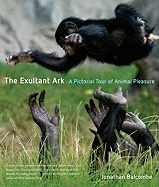
| Publisher: | University of California Press | |
| Genre: | Animals, General, Life Sciences, Science, Zoology - General, Nature | |
| ISBN: | 9780520260245 | |
| Pub Date: | May 2011 | |
| Price: | $34.95 |
| Nature & Environment |
by Jonathan P. Balcombe
The Exultant Ark is a romp through the sunnier side of the animal kingdom, packed with lively photographs of animals enjoying themselves--the sorts of things we don't see on grimly narrated nature documentaries about the bloody struggle for survival. On these big, colorful pages, scarlet macaws affectionately preen one another. A mother gorilla embraces its baby. Three furry fox kits tumble and play in the sun. A young elk turns its face into the falling snow, sticks out its tongue, and samples a snowflake.
But The Exultant Ark isn't just about pretty pictures. Biologist Jonathan Balcombe uses spirited descriptions and compelling arguments to implore humankind--particularly the scientific community--to consider our animal counterparts with greater empathy and respect. "Species and populations don't feel pains and pleasures; individuals do," Balcombe writes. "As surely as they each have a biology, each also has a biography." --Hannah Calkins, Unpunished Vice

| Publisher: | University of Chicago Press | |
| Genre: | Ecology, Plants & Animals, Subjects & Themes, Photography, Nature | |
| ISBN: | 9780226568706 | |
| Pub Date: | November 2011 | |
| Price: | $45 |
| Nature & Environment |
by Piotr Naskrecki
Entomologist Piotr Naskrecki takes readers not just around the world--from the dense forests of New Guinea and Ghana's remote Atewa Plateau to a beach in New Jersey--but through time as well. The natural world still contains traces of distant epochs past, in the form of organisms and habitats that remain comparatively untouched by evolution. Naskrecki describes his pursuit of these incredible "relics" with an enthusiasm that matches his considerable expertise, and his photographs are so astonishingly vivid the subjects threaten to crawl off the page. The best moment of Relics occurs, somewhat surprisingly, on the Jersey shore, as Naskrecki witnesses the 440-millionth annual mass-spawning of horseshoe crabs. "As strange and distant as [they] may seem," he writes as the crabs drag themselves from the sea, "these majestic organisms remind me that we share the same evolutionary heritage." Revelatory moments like this show how our pre-human history is not as remote as it may seem. --Hannah Calkins, blogger at Unpunished Vice
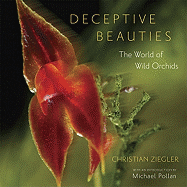
| Publisher: | University of Chicago Press | |
| Genre: | Flowers, Plants & Animals, Life Sciences, Plants, Subjects & Themes, Photography, Science, Botany, Nature | |
| ISBN: | 9780226982977 | |
| Pub Date: | October 2011 | |
| Price: | $45 |
| Nature & Environment |
by Christian Ziegler
For centuries, the allure of orchids has kept the botanically inclined under an intoxicating spell. In Deceptive Beauties, National Geographic photographer Christian Ziegler shares his knowledge and experience of these exotic, fragrant flowers, documenting searches for them in their natural habitats.
Ziegler's exquisite color photographs, taken on five continents, capture the visual intricacies of wild orchids, their delicate shapes and unique configurations. The pollination images reinforce the orchid's dazzling mystery and appeal, as does the commentary on the flower's evolutionary history. Discussion of the adapative qualities that enable orchids to survive and thrive in extremes of both heat and cold, from deserts to arctic air, is combined with a showcase of its beauty and bio-diversity, as Ziegler offers greater insight into why so many continue to fall under the seductive trap of this stunning flower. --Kathleen Gerard, blogger at Reading Between the Lines
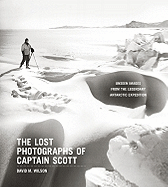
| Publisher: | Little, Brown | |
| Genre: | Expeditions & Discoveries, History, Photoessays & Documentaries, Photography, Polar Regions | |
| ISBN: | 9780316178501 | |
| Pub Date: | October 2011 | |
| Price: | $35 |
| Art & Photography |
by David M. Wilson
Nearly a century after his death during the ill-fated Terra Nova expedition to the South Pole, Captain Robert Falcon Scott remains a figure of controversy. Though initially lionized, Scott was later criticized by historians for a lack of preparation and foresight. Now David M. Wilson (Edward Wilson's Nature Notebooks), the great-nephew of an expedition member, uses Scott's own recovered photographs to recount the deadly journey.
Scott, who had been trained in photography by the expedition's official cameraman, captured eerily beautiful images of the alien Antarctic panorama. Ponies struggle through crusted snow while small supply camps stand alone against the bright, frosty horizon. Wilson's accompanying text uses the words of Scott and his crew to recreate the choices and hardships that led them to their doom. More than an adventure story, The Lost Photographs is an artifact from the dawn of photography as art, suitable for historians and photography enthusiasts alike. --Jaclyn Fulwood, graduate assistant, University of Oklahoma Libraries
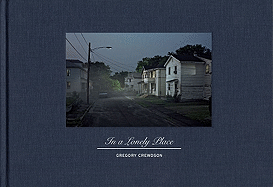
| Publisher: | Abrams | |
| Genre: | Individual Photographers, Artists' Books, Photography | |
| ISBN: | 9781419701108 | |
| Pub Date: | August 2011 | |
| Price: | $40 |
| Art & Photography |
by Gregory Crewdson
Gregory Crewdson's photographs are illuminated moments pregnant with literary possibilities. A barefoot, lingerie-clad woman stands in the middle of a suburban street, hesitating between a waiting taxi and a warm, lighted home. Is she a modern Emma Bovary about to elope with her rakish lover or a prodigal teenager returning home? A nude woman lies pensively on a stained mattress in a tropical forest, while a dark-skinned man, partially clothed, sits nearby with his back to the viewer. Is this a reenactment of the Fall of Eden or an interracial post-coital scene from a Faulkner novel? A set of photographs taken at the desolate backlot of Italy's Cinecittà studio evokes the tone of The Twilight Zone, while the "Fireflies" series provides a bittersweet ending, as swooning orbs of light recall Piet Mondrian's Broadway Boogie Woogie or bright notes in a jazz snippet--nostalgic yet still affirmative of the here and now. --Thuy Dinh, editor, Da Mau magazine
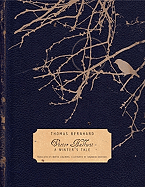
| Publisher: | Seagull Books/University of Chicago | |
| Genre: | General, Fiction | |
| ISBN: | 9781906497644 | |
| Pub Date: | July 2011 | |
| Price: | $25 |
| Art & Photography |
by Thomas Bernhard, trans. by Martin Chalmers, illust. by Sunandini Banerjee
It's a little difficult to imagine Austrian writer Thomas Bernhard (1931-1989) crafting a children's fable. After all, he was known as a purveyor of gloom, a pessimist and a misanthrope--imagine Samuel Beckett fashioning a children's tale about two kids waiting for a friend who never shows up. Nevertheless: a doctor is walking through the snowy woods at night and trips over Victor Halfwit, freezing to death. His wooden legs have broken. It seems he was trying to get through the woods at night in less than an hour to win a bet. Crazy? The doctor carries him to town where they meet the man, who has now lost his wager and must pay up.
Strange indeed. But Sunandini Banerjee's gorgeous illustrations--mysterious, dream-like collages on heavy stock paper--turn this simple tale into an eerie voyage into the Freudian subconscious. It's as if Germany's brooding Grimm Brothers accidentally collided with a "Fractured Fairy Tale" from Rocky and Bullwinkle. --Thomas Lavoie, former publisher

| Publisher: | Lyons Press | |
| Genre: | Physics, General, Earth Sciences, Aerial, Subjects & Themes, Astronomy, Geography, Photography, Astrophysics, Science | |
| ISBN: | 9780762777556 | |
| Pub Date: | December 2011 | |
| Price: | $32.50 |
| Art & Photography |
by L. Douglas Keeney
NASA has an archive of more than one million photographs that have been taken by its astronauts from outer space, but it wasn't until 2003 that someone designed a camera that could compensate for the 17,000-miles-per-hour speed of orbiting spacecraft and the Earth's rotation to deliver crisper, clearer images of the planet. This improvement revealed the spectacular glory of our nighttime world--thanks to lights, lots of lights, enough to consume 17.1 billion megawatt hours of electricity a year.
L. Douglas Keeney led a team that sifted through thousands of photos to compile this collection, one dramatic photo after another of the illuminated patterns that magically create Earth's own circulatory system. Here we see the Nile snaking its way north, here New York City awash in light. (And what's the single brightest "spot" on earth? Las Vegas.) Lights of Mankind is a spectacular picture book for parents to show children, for geographers and engineers or anyone who loves photos of Earth from space. --Thomas Lavoie, former publisher

| Publisher: | Penguin Press | |
| Genre: | Art, General, Eastern, Philosophy, Individual Artists, Middle Eastern, Poetry | |
| ISBN: | 9781594203060 | |
| Pub Date: | October 2011 | |
| Price: | $27.95 |
| Art & Photography |
by Peter Sis
Peter Sís is a stylistic illustrator whose detailed drawings have rendered both the fantasies of children's stories and adult yearnings for freedom. In The Conference of the Birds, the three-time Caldecott Honor Award winner takes inspiration from a 13th-century fable by Persian poet Farid Ud-Din Attar to create a visual feast of color and Escher-like images on textured paper.
The Conference story is a traditional quest tale where courage and determination overcome adversity, but it is the combination of Sís's complex geometrical landscapes with Middle Eastern influenced mazes, swirls and deep earth colors printed in full-page portfolio fashion that lift this book above the simplicity of its narrative. With tactile paper, elegant design, scrolling text and deftly detailed illustrations joined to a moving story, it reminds us how a well-made book transcends its parts to become itself a work of art. --Bruce Jacobs, founding partner, Watermark Books & Cafe, Wichita, Kan.
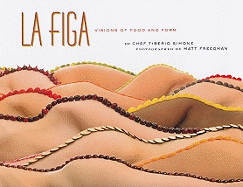
| Publisher: | Book Publishers Network | |
| Genre: | Individual Photographers, Photoessays & Documentaries, Portraits, Subjects & Themes, Artists' Books, Photography, Nudes | |
| ISBN: | 9781935359753 | |
| Pub Date: | May 2011 | |
| Price: | $39.95 |
| Art & Photography |
by Tiberio Simone, photographed by Matt Freedman
Seattle catering chef Tiberio Simone thinks about food and sex a lot, often in tandem: A fennel salad has "a fresh flavor I can share and enjoy with the person I'm kissing," and he's used his mango salsa as a seduction tool. He also explores the sensual properties of food in a collaborative project with photographer Matt Freedman, draping naked models in fruits and vegetables. A woman's buttocks might be covered in strawberries, or a man's head, torso and arms decorated with purple potato slices. By turns arresting and playful, these pictures are accompanied by Simone's recollections of his Italian childhood and his meditations on adult pleasures, as well as several recipes. "If you pay attention, you'll see that beauty is everywhere," he advises. "In the produce section of the supermarket, and in the voluptuous person standing next to you in the checkout line." La Figa offers one lavish example after another of this philosophy of polymorphous pleasure. --Ron Hogan, founder of Beatrice.com
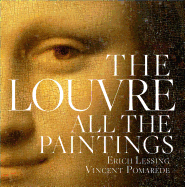
| Publisher: | Black Dog & Leventhal | |
| Genre: | Collections, Catalogs, Exhibitions, Art, Museum, European | |
| ISBN: | 9781579128869 | |
| Pub Date: | November 2011 | |
| Price: | $75 |
| Art & Photography |
by Erich Lessing, Vincent Pomarède
The Louvre holds many of the most celebrated and important paintings of all time, and they, along with every other piece in the permanent collection--a staggering total of 3,022 works in all--are presented in the spectacular The Louvre: All the Paintings, an "exhibition catalogue" to forever define the term. The inventory is divided into four schools--Italian, Northern, French and Spanish--then arranged chronologically by the artist's date of birth, making it easy to browse, find and enjoy lively descriptions of the artists and their work. You'll also find tidbits of little-known gossip by observant art historians scattered throughout: for instance, Leonardo Da Vinci's The Virgin on the Rocks was originally received with disfavor because of the artist's insistence on light-dark contrast instead of clear identification of the figures.
Warning: The Louvre: All The Paintings weighs 10.6 lbs. and has 784 pages. Let the power lifting begin! --Valerie Ryan, Cannon Beach Book Company, Ore.

| Publisher: | Douglas & McIntyre | |
| Genre: | Collections, Catalogs, Exhibitions, Art, General, Native American | |
| ISBN: | 9781553657781 | |
| Pub Date: | July 2011 | |
| Price: | $50 |
| Art & Photography |
by Gerald McMaster, editor
Canada is the second largest nation in the world, but its vastness is often a surprise, even to "lower" Canadians who live close to the southern border against the United States. The area north of the arctic tree line is largely uninhabited... except, that is, for the diverse communities of the Inuit.
The bold and often intricate sculptures of self-taught Inuit artists, created predominately from available stone and animal fur, sinew and bone, began to build a national and international reputation in the 1950s. The Art Gallery of Ontario has one of the world's largest collections of Inuit art, and it's showcased in the comprehensive, full-color Inuit Modern. Photographs of more than 175 works by 75 artists, with a variety of short but informative essays by historians, curators and the artists themselves, provide a definitive representation of the modern and evolving creative world of a people whose history has been primarily one of survival in a cold and harsh climate. --Bruce Jacobs, founding partner, Watermark Books & Cafe, Wichita, Kan.
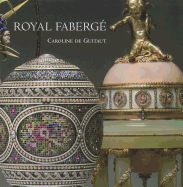
| Publisher: | Royal Collection | |
| Genre: | Collections, Catalogs, Exhibitions, Art, Permanent, History, Russia & the Former Soviet Union, Europe, Russia & Former Soviet Union | |
| ISBN: | 9781905686377 | |
| Pub Date: | September 2011 | |
| Price: | $24.95 |
| Art & Photography |
by Caroline de Guitaut
Over the last two centuries, Britain's royal family has amassed a handsome collection of works by the legendary Russian jeweler Peter Carl Fabergé. His name may be most closely associated with the Romanovs' famously ostentatious eggs, but Royal Fabergé demonstrates the full range of his creativity. Some of the works featured were purchased from Fabergé's London showroom; others were acquired from antiquities dealers after the Russian Revolution's dust had settled.
Caroline de Guitaut, curator of decorative arts in the Royal Collection, describes this impressive hoard in loving detail, from floppy-eared pigs intricately carved from agate to diamond-studded, enameled cigarette cases (and, of course, the eggs). The book itself is no less lovely, its photos elegantly set in a Laura Ashley-like color palette. The paper is heavy and satiny, the kind you can't help but touch even after the page has been turned. It's a suitably luxurious tribute to an opulent subject. --Kelly Faircloth, freelance writer
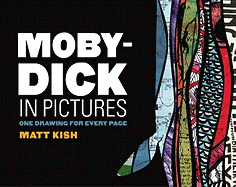
| Publisher: | Tin House | |
| Genre: | Art, General, Graphic Arts, Illustration, Individual Artists, Design | |
| ISBN: | 9781935639138 ($69.95 hardcover with slipcase, 9781935639121) | |
| Pub Date: | October 2011 | |
| Price: | $39.95 |
| Art & Photography |
by Matt Kish
What is it about artists and Moby-Dick? From Rockwell Kent's classic prints and Barry Moser's elegant line drawings to Will Eisner's graphic novel, not to mention Frank Stella's multimedia undertaking and Jackson Pollock's Blue, Melville's novel has long cast a spell on artists. Matt Kish is the latest to come under it, big time.
Inspired by Zak Smith's illustrations for Gravity's Rainbow, Kish hid away in a closet studio for 18 months, illustrating selected lines from every page (552 of them) of the Signet edition! Primarily applying ink pen, marker, crayon and watercolor to the actual pages, he has produced beautifully imagistic and impressionistic illustrations, heirs to the surreal and dada, with a little "yellow submarine" thrown in. Here is a cornucopia of images: whales as floating teeth or a green snake, Ahab as a disembodied skull, Ishmael as a wooden buoy. The carefully selected found paper creates haunting images upon images.--Thomas Lavoie, former publisher

| Publisher: | Filipacchi Publishing | |
| Genre: | Celebrity, Portraits, Subjects & Themes, Photography | |
| ISBN: | 9781936297467 | |
| Pub Date: | October 2011 | |
| Price: | $40 |
| Art & Photography |
by Brian Smith, photographer; Robin Bronk, editor
What allowed Taye Diggs to find his identity, sustained Tony Bennett through a Depression-era childhood and represents love to Spike Lee? These are just three of the famous performers and filmmakers who speak to the life-altering power of art, their personal testimonies juxtaposed alongside photographic portraits by Brian Smith. Although Art & Soul is filled with celebrities, Smith's skill at portraiture is the real star attraction. He forgoes glamour and ornamentation in favor of frank, intimate shots that allow the subjects' personalities to shine. From Anne Hathaway's assertion that art is hope to Patricia Arquette's plea to support the arts for underprivileged children, Art and Soul is an affirmation of art's ability to inspire, heal and direct our lives, and is sure to delight everyone from portraiture connoisseur to philanthropist to coffee table book lover. --Jaclyn Fulwood, graduate assistant, University of Oklahoma Libraries

| Publisher: | Harper Design | |
| Genre: | Horror, Comics & Graphic Novels | |
| ISBN: | 9780062025715 | |
| Pub Date: | September 2011 | |
| Price: | $29.99 |
| Art & Photography |
by Jasmine Becket-Griffith, Matthew David Beckett
The vampire is "one of the most powerful avatars of our fears and our dreams," Rachel Caine (author of the Morganville Vampires series) observes in her introduction, and Vampire Art Now is loaded with dozens of different takes on their archetypal resonance. From portraits of Hammer film icons Christopher Lee and Ingrid Pitt to near-cherubic Keane-eyed waifs with fangs poking out from their lips, from lesbian lovers to savage, snarling beasts, there's a vampire to suit everyone's taste (especially if your taste runs toward goth, high fantasy or blood-drenched gore). The artwork ranges from simple black-and-white drawings to lush paintings, polymer sculptures and digitally manipulated photographs, and each illustration is accompanied by a paragraph from the artist; some choose to discuss technique, while others focus on the backstories of characters they've clearly come to adore. Though not for the squeamish, Becket-Griffith and Becket's selections vividly demonstrate the genre's diversity. --Ron Hogan, founder of Beatrice.com